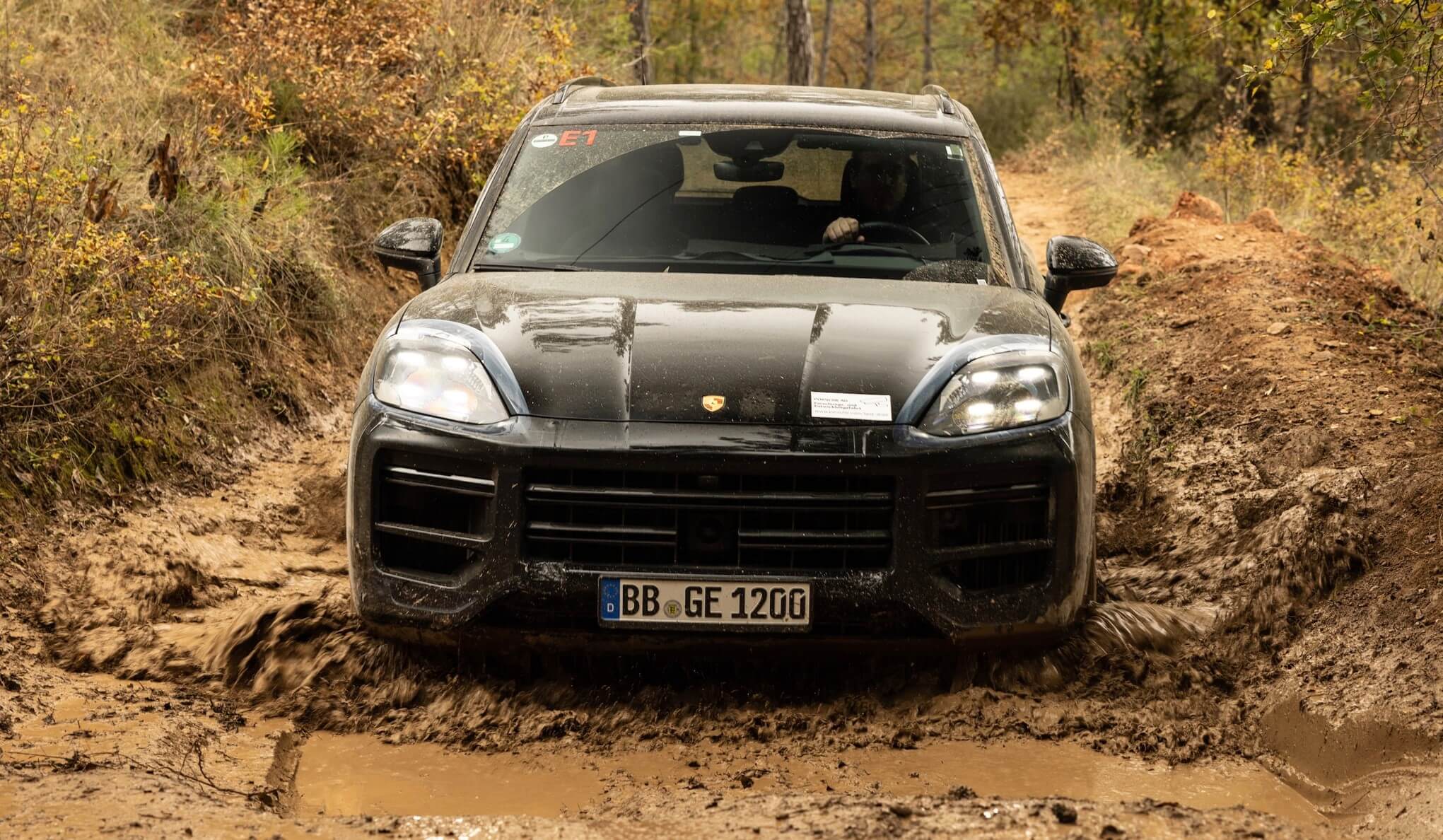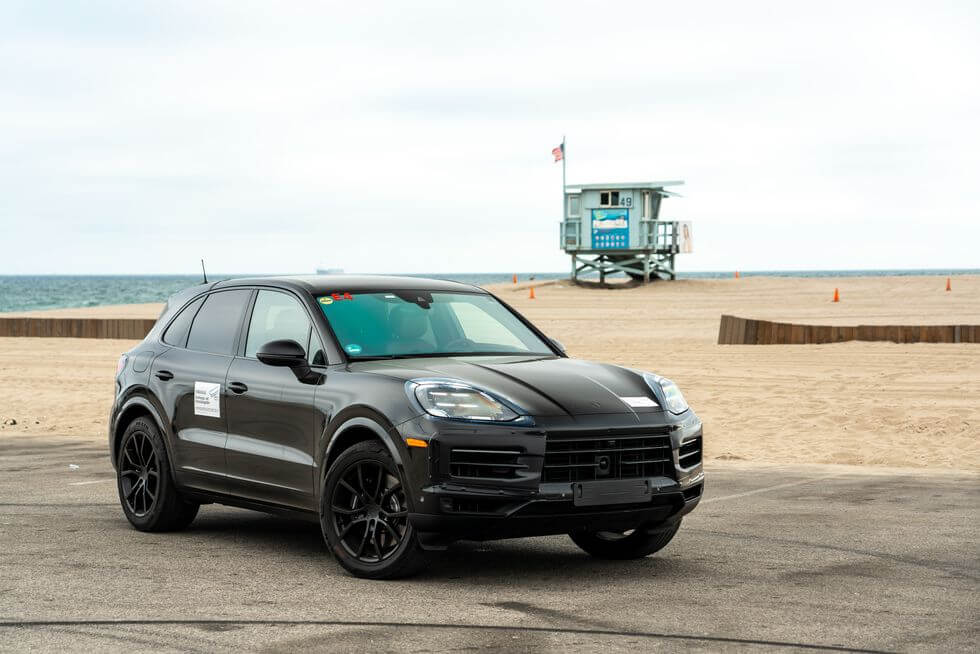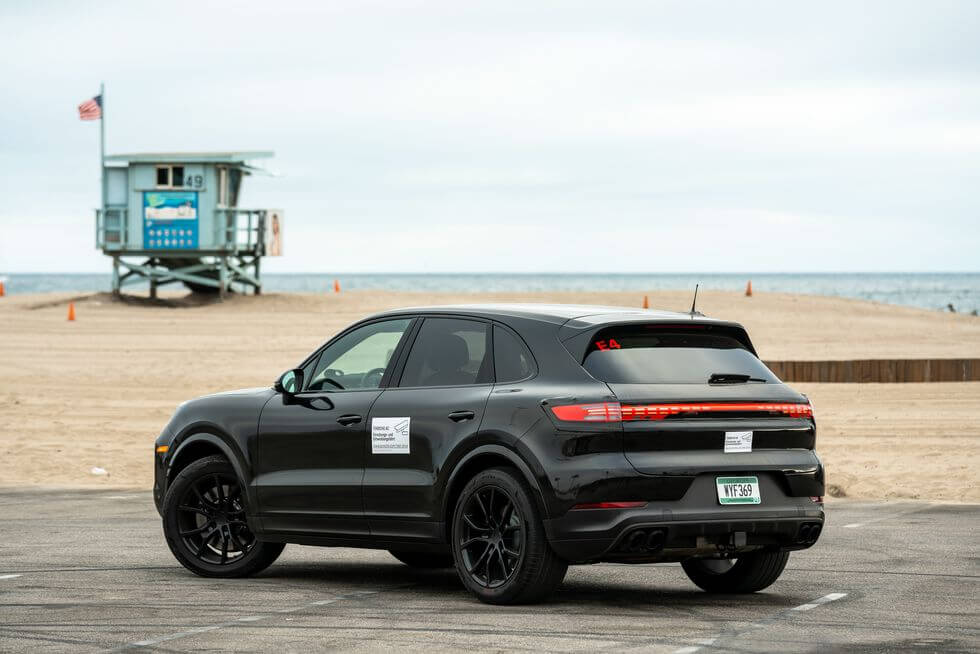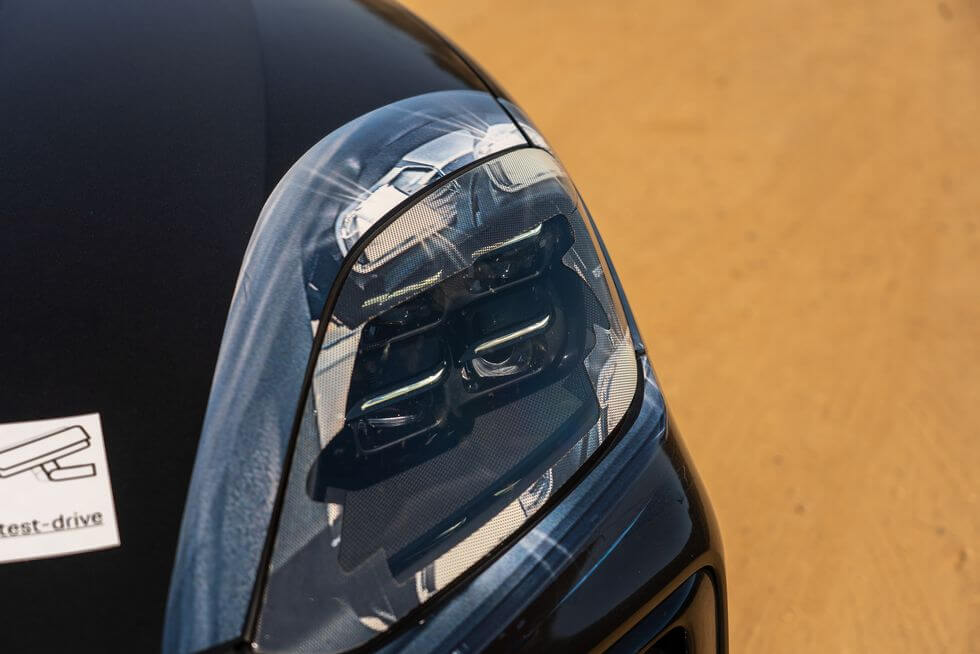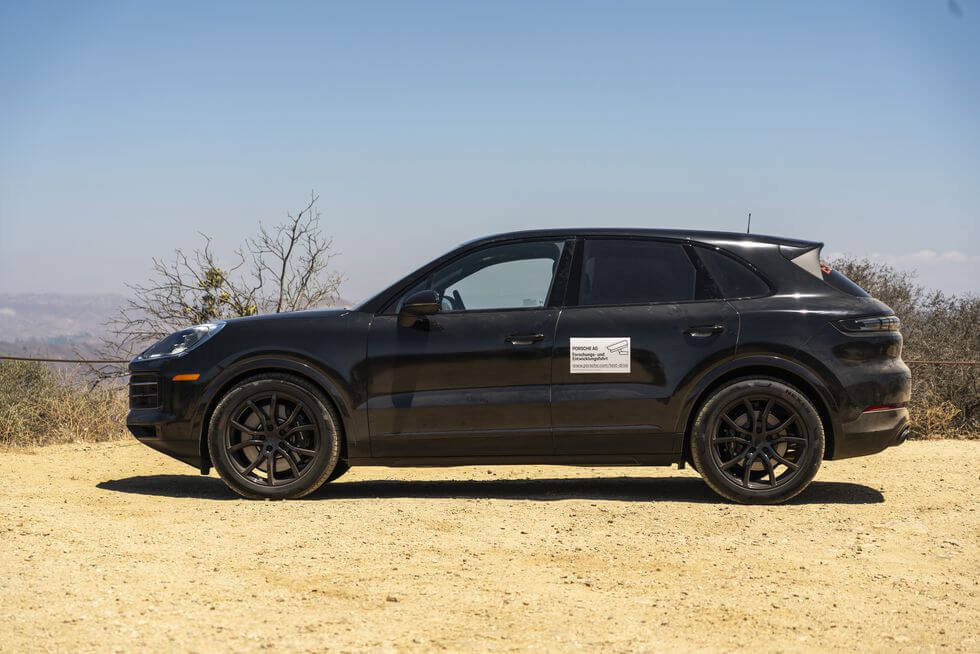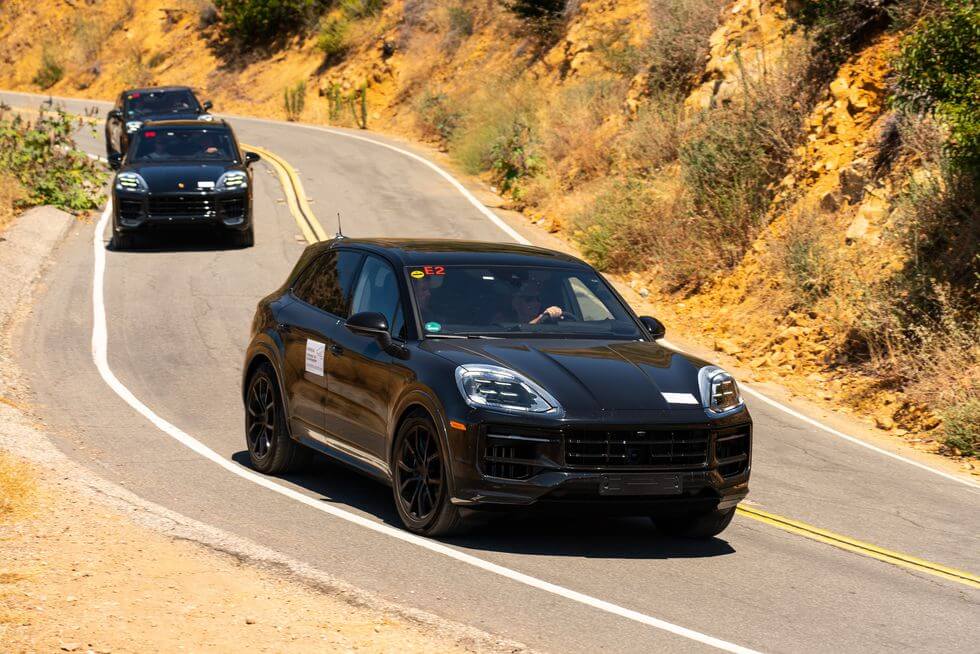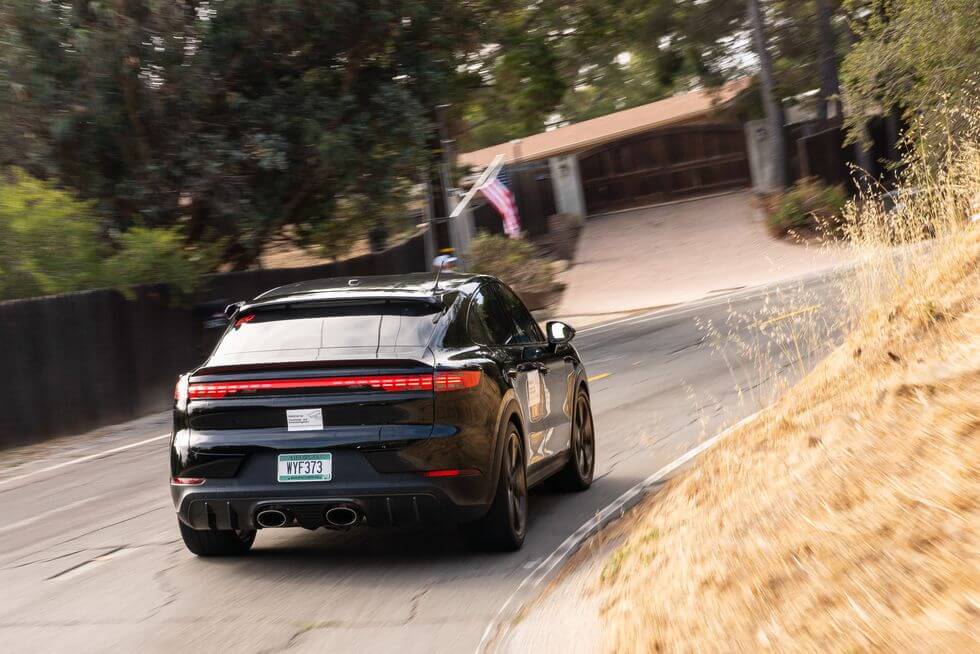There is a revised engine line-up, new interior, and upgraded PHEV for the 2023 Cayenne – and we’ve driven it.
Testing for the new, facelifted Porsche Cayenne has reached its final stages, with the German car maker subjecting its updated luxury flagship to a series of endurance tests and technology trials across four continents.
Pre-production and prototype versions of the new Cayenne, which will receive what has been described as “one of the most extensive product upgrades in the history of Porsche” by the firm, were put through their paces in Asia, Africa, Europe and North America, covering more than four million test kilometres.
The SUV took on extreme conditions in desert, snowy and rugged mountain terrains, with Porsche engineers testing the model’s new semi-active chassis. Tests also included over 200,000km spent in urban traffic, on motorways and on country roads.
Porsche said it was testing the Cayenne as if it had been “developed from scratch”, with the goal of “achieving an even wider range between the typical Porsche on-road performance, long-distance comfort and off-road capability.”
Towards the end of last year, we exclusively drove a pre-production prototype of the new Cayenne. Read on to see what we thought…
It’s early morning as a fleet of camouflaged new Porsche Cayennes leaves a Los Angeles hotel’s underground car park.
They join the traffic and run in convoy along the back roads of Venice Beach and Santa Monica, before reaching the Pacific Coast Highway and heading farther north beyond Malibu in search of challenging canyon roads.
These early-build prototypes, both in conventional SUV and coupe bodystyles, have been at the centre of a demanding test programme along the California coast and in Nevada’s Mojave Desert for almost a month.
Now, before they’re all flown back to Germany, where they will be torn down to study the wear and tear on various components or pushed into further testing duties, it’s our turn to discover how Porsche has tried to raise the Cayenne’s appeal against ever-growing competition from the likes of the BMW X5, Mercedes-Benz GLE and Range Rover Sport.
This ‘facelift’ is clearly more than just a token update. In fact, the changes are quite extensive, due to the decision to continue production well beyond what was planned at launch in 2017.
Model line director Stefan Fegg explains: “The Cayenne’s future is secure. With the investments we’re making in adding EVs to the line-up, we’ve decided to extend the life of many of our ICE cars. We’ve been given greater freedom than is usually the case at this point in the model cycle.”
Porsche won’t go into detail on what’s in store for the Cayenne after 2025, when the Mk4 was meant to arrive. What we can tell you, though, is that the facelifted Mk3 we’re driving here in prototype form certainly carries some rather significant changes.
While perhaps not quite as transformative as Porsche would have us believe, they subjectively make it a yet more compelling ownership proposition.
Porsche is a master in evolutionary design, and this is fully reflected in the stylistic updates introduced here. Look past the light camouflage and you will see the subtly reprofiled front bumper, the revised front wings and the slightly altered shape of the new matrix LED headlights, plus a series of similar changes at the rear.
As is usual at facelift time, there will also be new paint colours and optional wheel designs incoming. Furthermore, the base model and the S adopt larger, 20-inch wheels.
More significant revisions are concentrated beneath the bonnet, Porsche having introduced more potent versions of existing engines and new engine options altogether.
On the petrol side, the entry-level turbocharged 3.0-litre V6 now develops an added 10kW and 50Nm, at 260kW and 500Nm. The Audi-developed twin-turbocharged 2.9-litre V6 in the S is replaced by Porsche’s twin-turbocharged 4.0-litre V8, bringing an added 26kW and 50Nmt, at 350kW and 600Nm. And the more heavily tuned version of that V8 in the range-topping Turbo GT gets a 15kW increase, lifting it to 485kW (although torque stays at 850Nm).
Due to tightening emissions rules, though, the Turbo GT will no longer be offered in Europe and other markets that adhere to Euro 6AP regulations.
Meanwhile, the plug-in hybrids adopt a revised gearbox-mounted electric motor, which develops 30kW more, at 130kW. The turbocharged 3.0-litre petrol V6 in the E-Hybrid has actually been detuned slightly, from 250kW to 225kW, but the increase in electric reserves gives it an added 6kW in overall output, at 346kW (although also 50Nm less torque, at 650Nm). The PHEVs also receive a new 25.9kWh battery, giving them an extra 11.8kWh of energy storage.
They support faster rates of AC charging too, the limit rising from 7.2kW to 11kW. Revised software also brings a new charging strategy with a higher initial rate of charge. Porsche says the new battery and software have increased the electric-only range of the PHEVs by up to 80 per cent, which should ensure close to 50 miles for the E-Hybrid. Along with successors to today’s E-Hybrid and S E-Hybrid, there will also be an additional PHEV, details of which remain under wraps.
Porsche is eager to discuss the Cayenne’s suspension, however, this having been “fundamentally revised and further developed”. Included is the adoption of Porsche Active Suspension Management with new twin-tube variable rate dampers on the steel suspension. The optional air suspension also returns to dual-chamber plungers from the current tri-chamber units. Buyers will also be able to choose from a new range of tyres that have taller sidewalls for claimed improvements in ride comfort.
Additionally, there are tweaks to the rear-wheel steering system on higher-end Cayennes. It’s claimed to provide a greater turning angle for the rear wheels at lower speeds for added agility in urban settings. The braking system has also been reworked, with a new electronic booster providing kinetic energy recuperation all the way to a stop.
Inside, the Cayenne has been given a Taycan-like makeover. We can’t show you it yet, but we can tell you that there’s a heavily restyled dashboard housing a 12.7-inch curved digital instrument display, a revised version of the 12.3-inch infotainment touchscreen and an extra 10.9-inch display for the front passenger.
The gearlever has been removed from the centre console and replaced by a toggle like that in the Taycan, mounted high up within easy reach of the new steering wheel, which itself receives a rotary controller for the driving modes. The head-up display unit has also been reworked to incorporate new augmented reality graphics. Additionally, the door trims have been restyled, the wireless phone charging pad has been boosted to 15W and there’s vastly improved air conditioning and ventilation.
All these changes to the interior certainly give the Cayenne a more contemporary feel and a greater dash of digital flair from the firmly cushioned driver’s seat. The S prototype soon proved that the decision to replace the Audi V6 with a more potent Porsche V8 will raise its appeal. With a 0-100km/h time of around 5.0sec and a top speed close to 270km/h, there’s added punch to the performance. It’s clearly stronger and more determined than before.
With greater torque at lower revs, the V8 also provides the Cayenne with a more relaxing gait and added calmness at motorway speeds, this in combination with a revised set of ratios for the standard eight-speed automatic transmission.
The V8 is also smoother across a wider range of revs, adding to the impressive mechanical refinement in everyday driving conditions. It all makes you wonder if it’s worth paying the extra for the Turbo.
It isn’t just quick and refined in a straight line, either. The current S is already one of the most engaging SUVs in its class, yet this reputation has now been enhanced. It points remarkably well, its electromechanical steering being superbly precise, the rear-wheel steering ensures great agility and the four-wheel drive system delivers outstanding traction.
Granted, it’s no lightweight, but its ability to carry substantial speed into corners while continuing to deliver masses of grip makes it a special drive on challenging roads.
Could we tell the difference made by the suspension modifications? Not without direct comparison to the existing Cayenne. Porsche’s engineers are, however, adamant that moving back to dual-chamber air suspension gives the car better body control and ride compliance (the latter in combination with new larger-profile tyres, which they say better isolate road shock). The arrangement is a new development sharing little with that used on the old Mk2 Cayenne, we’re told.
Porsche has hardly transformed the Cayenne in terms of driving characteristics, but then very little was needed to keep it ahead of the in-class competition in this regard. As for the area in which it could have taken a stride forward, namely the interior, it has done precisely that.
Ever since its introduction two decades ago, Porsche’s luxurious large SUV has continually outshone its rivals, and we now wouldn’t be surprised if this leadership isn’t maintained by the facelifted Mk3.




